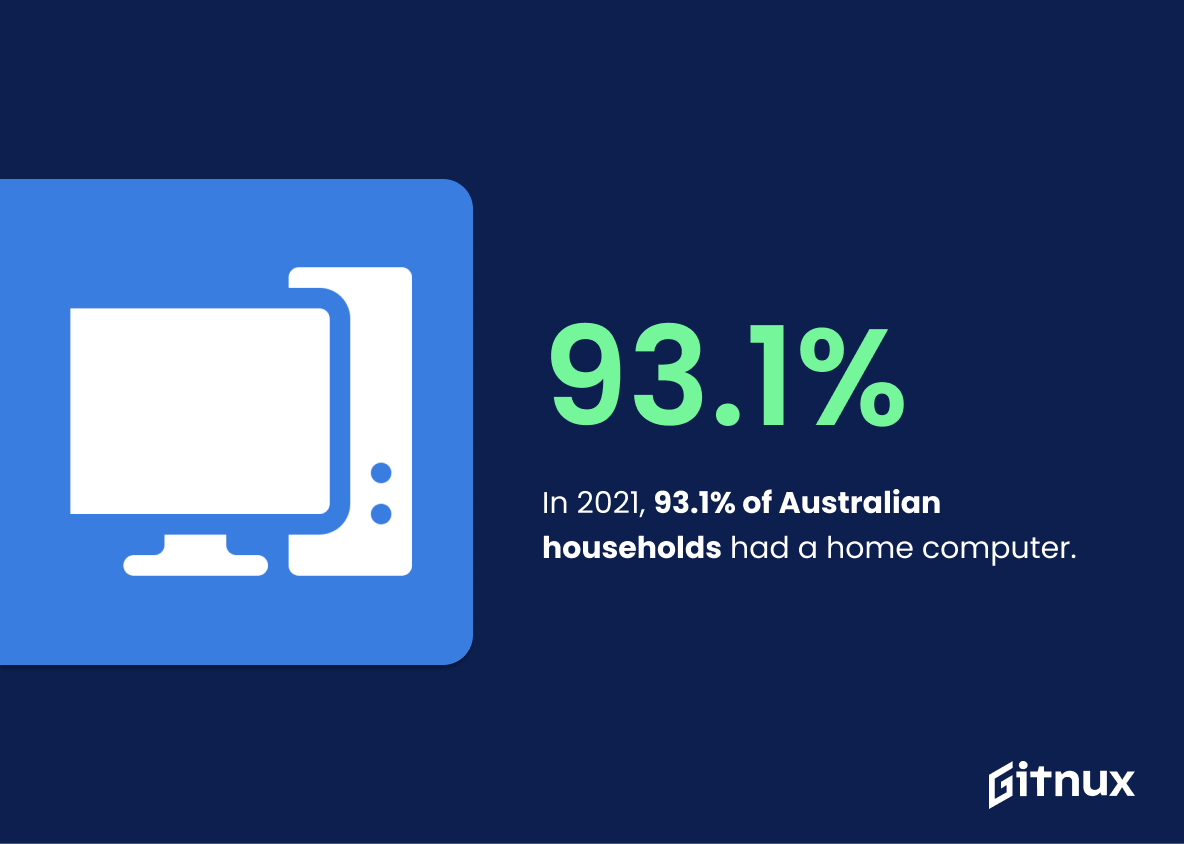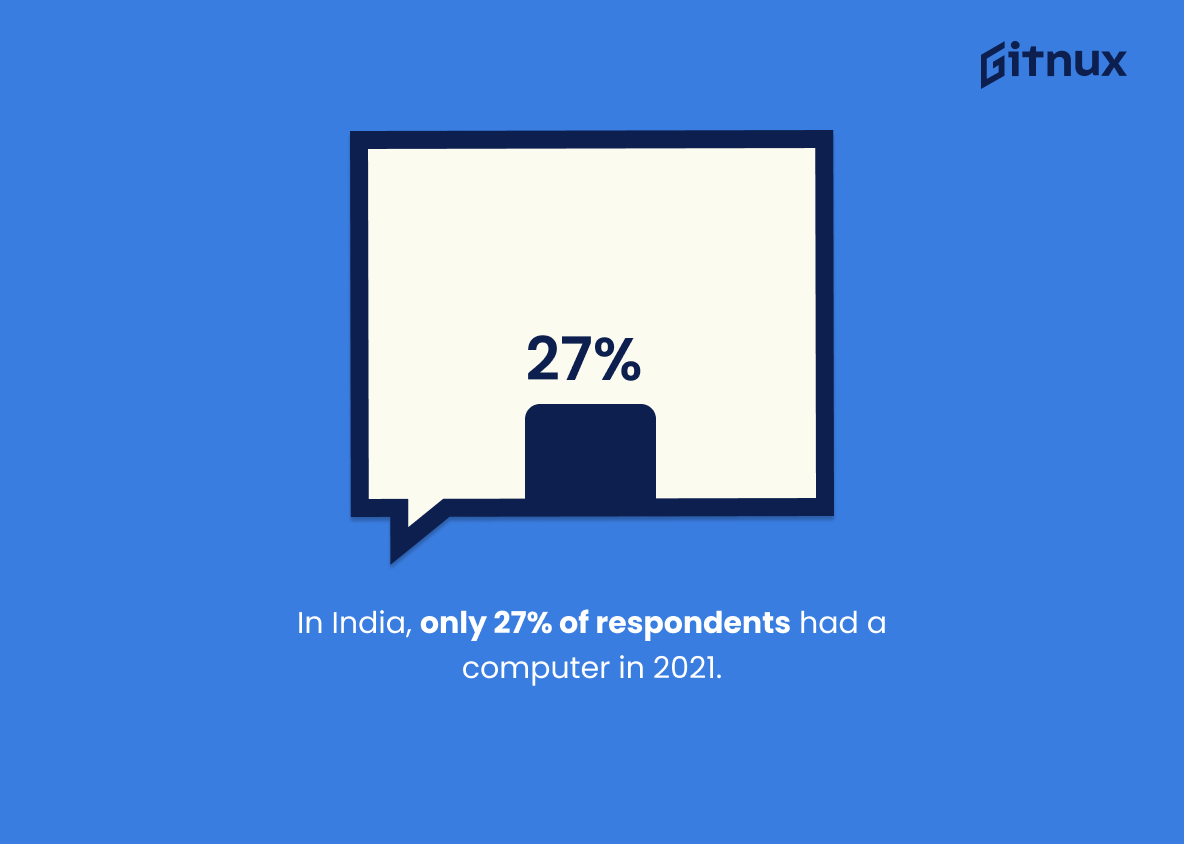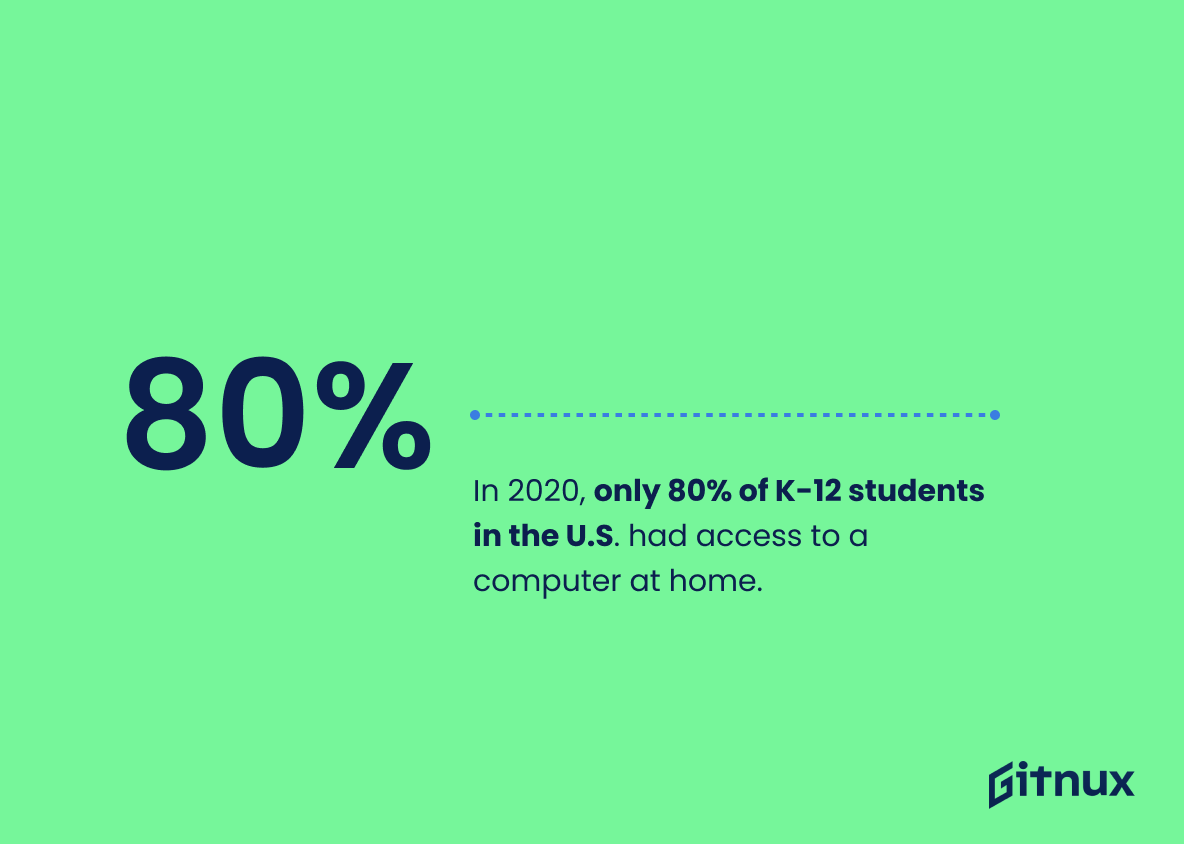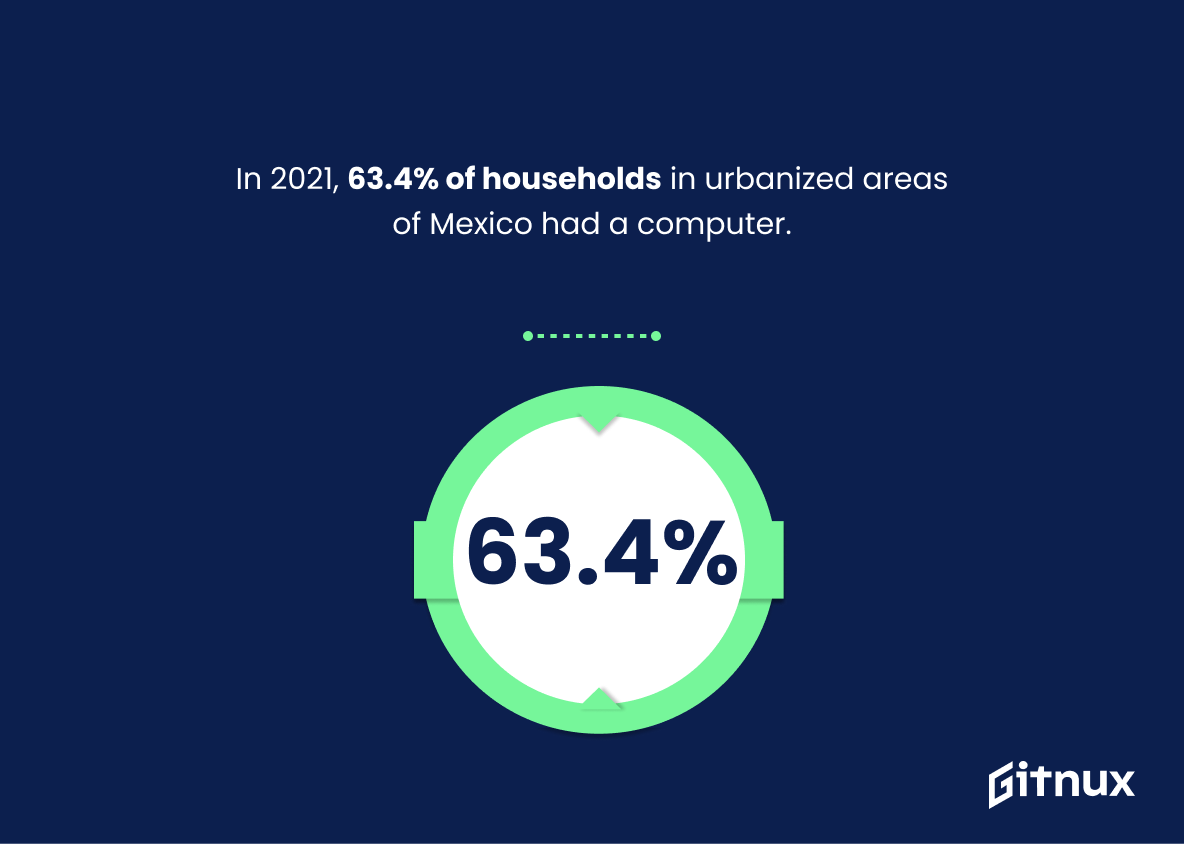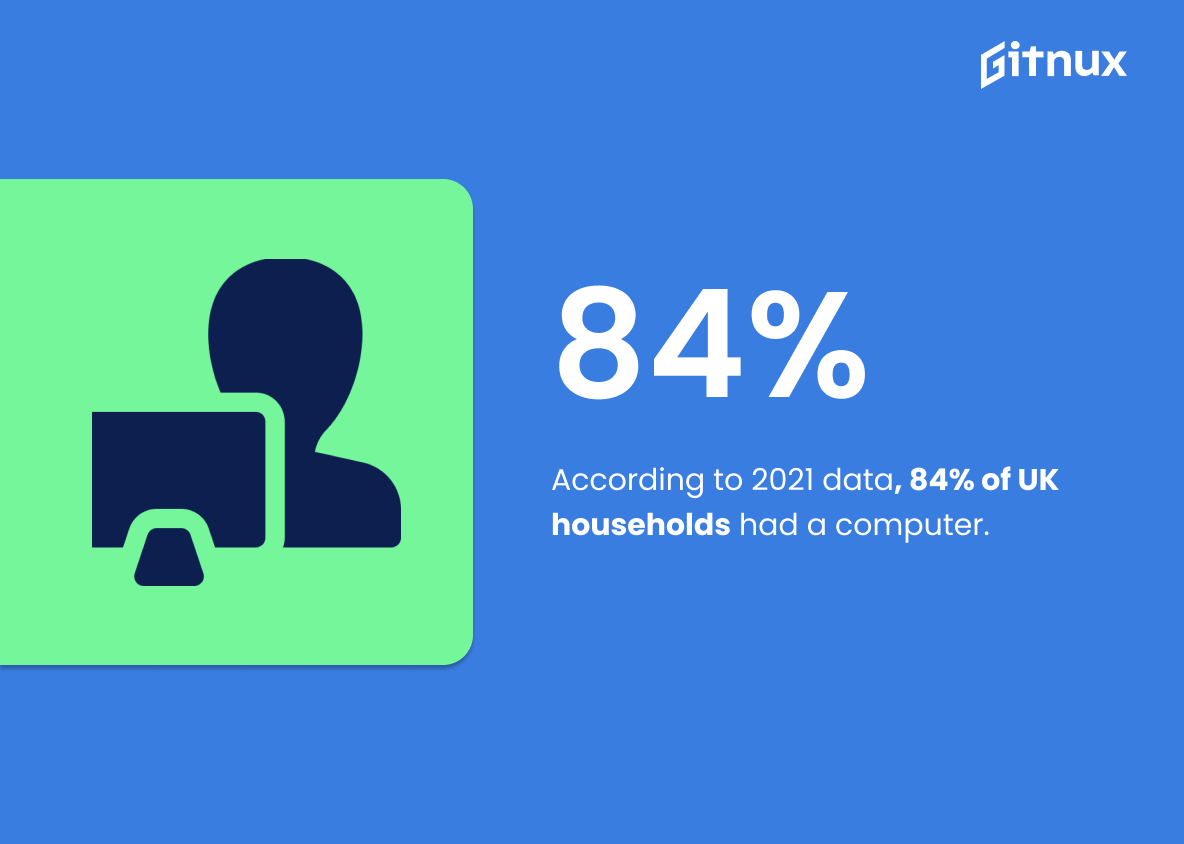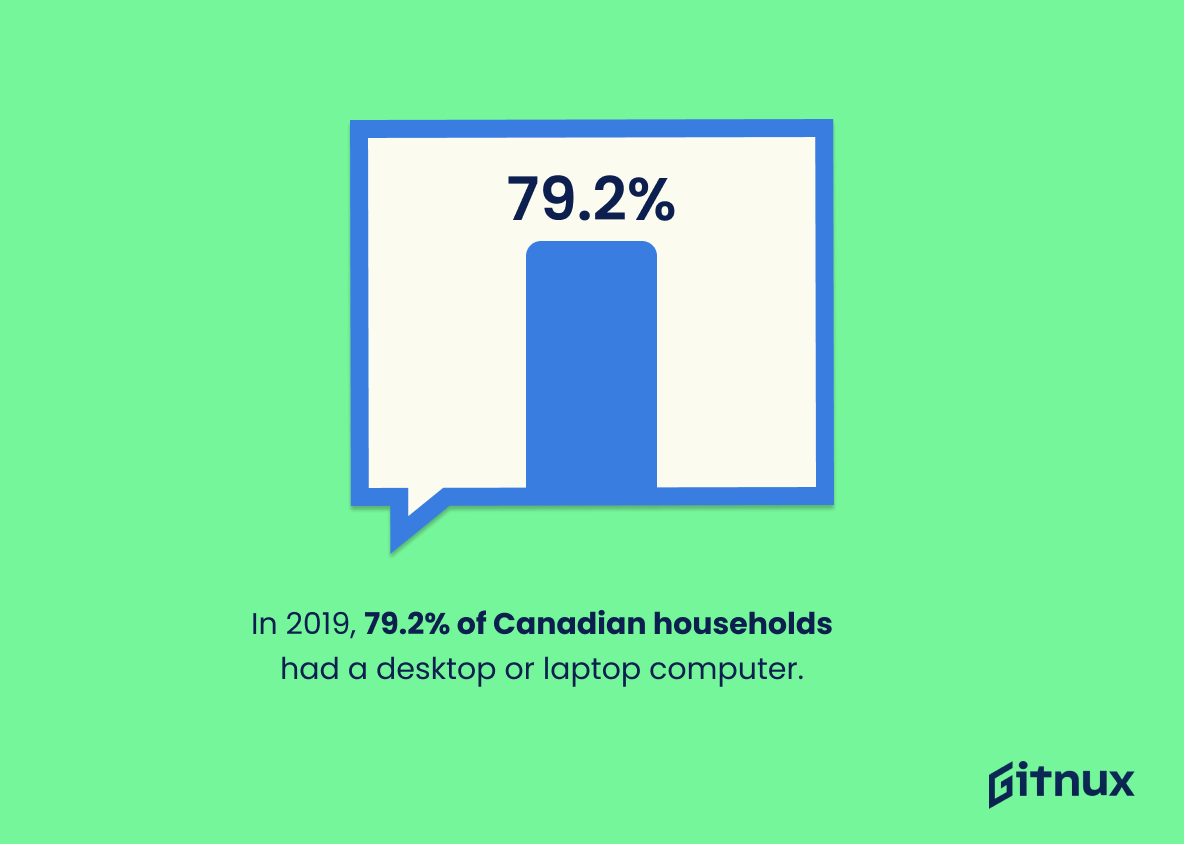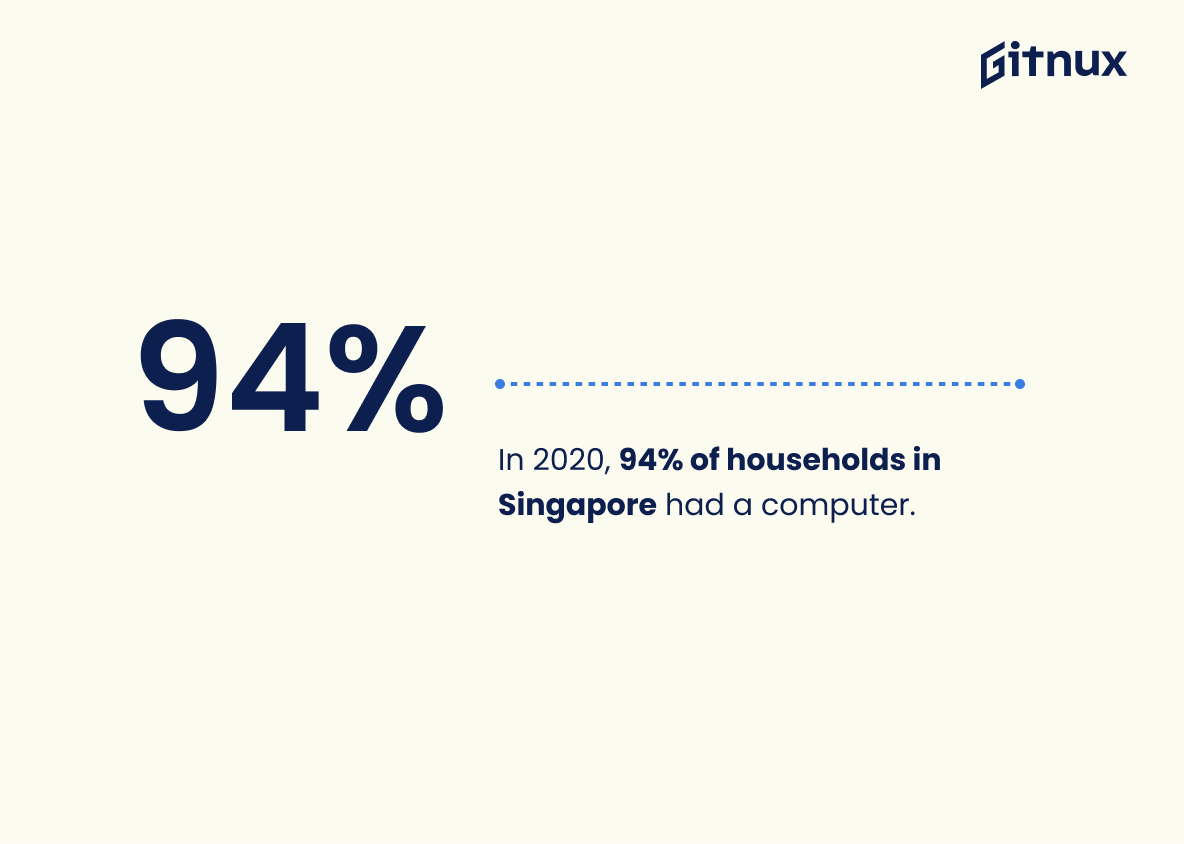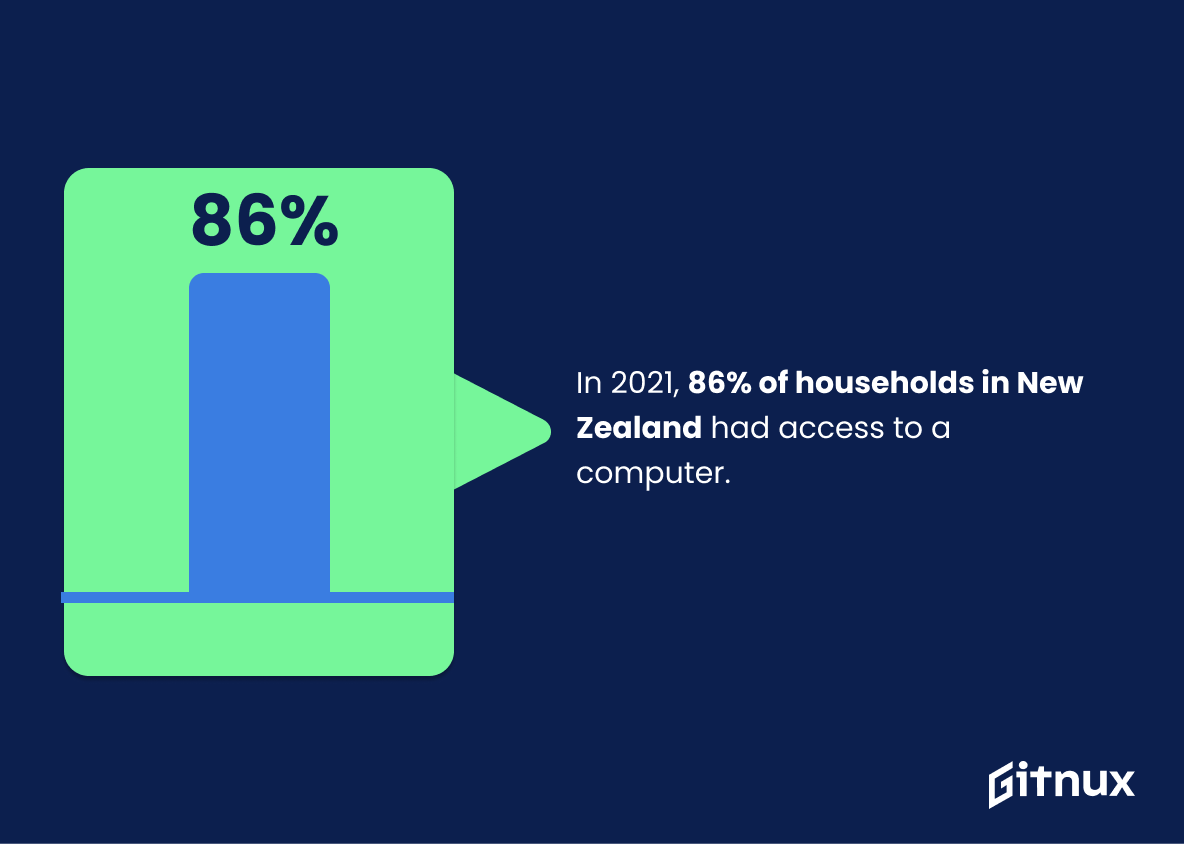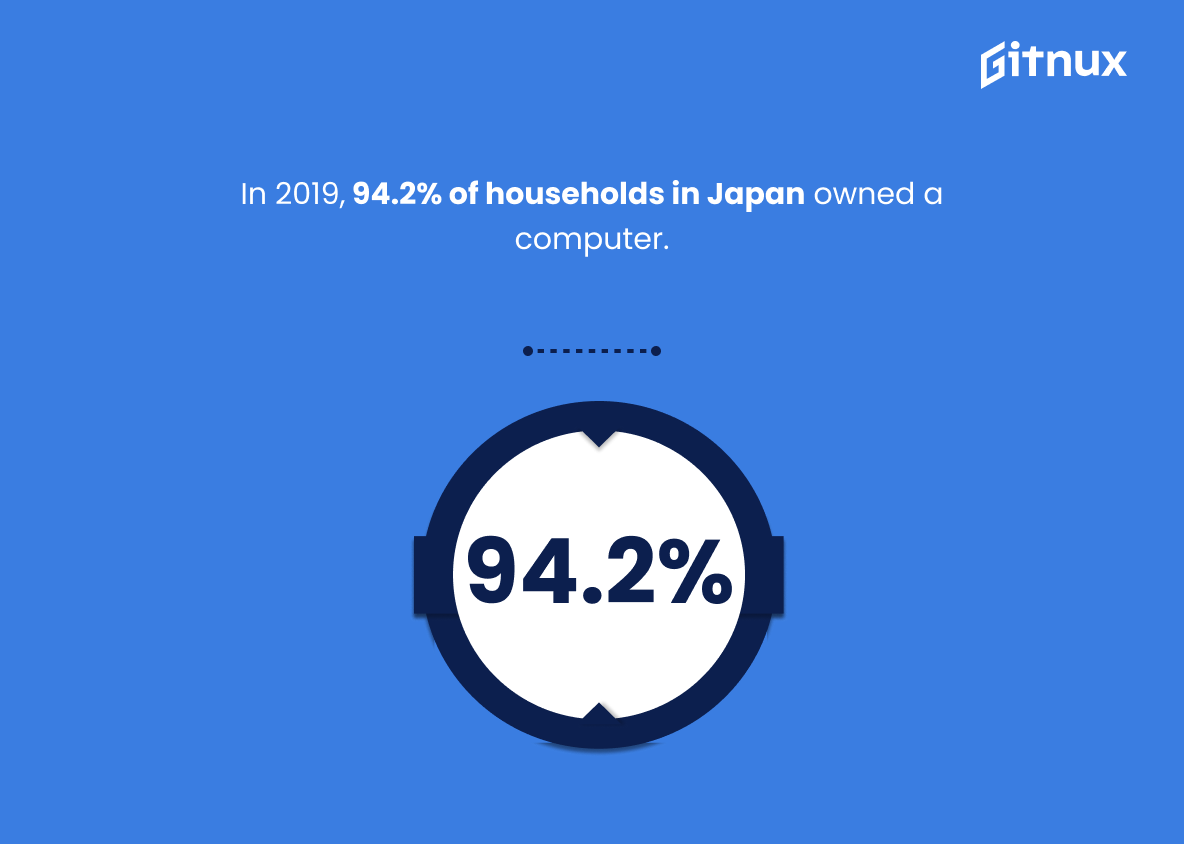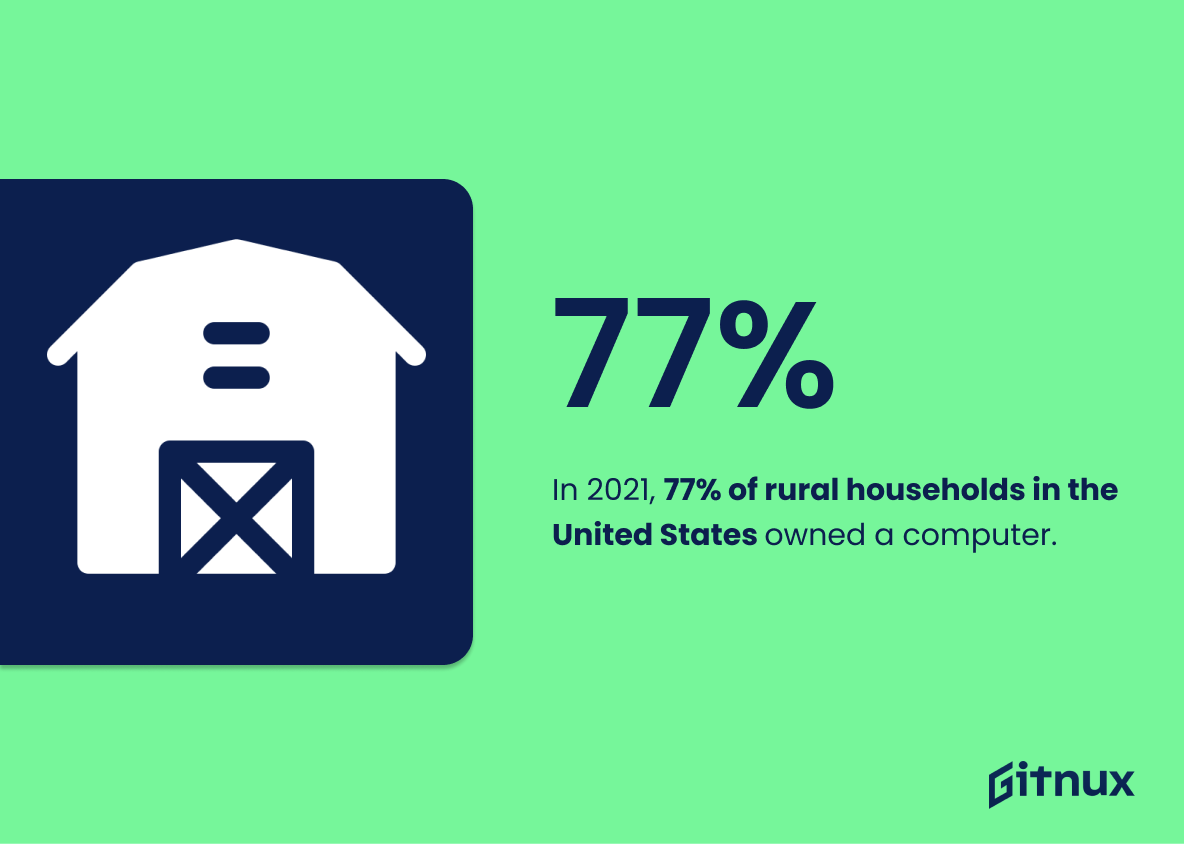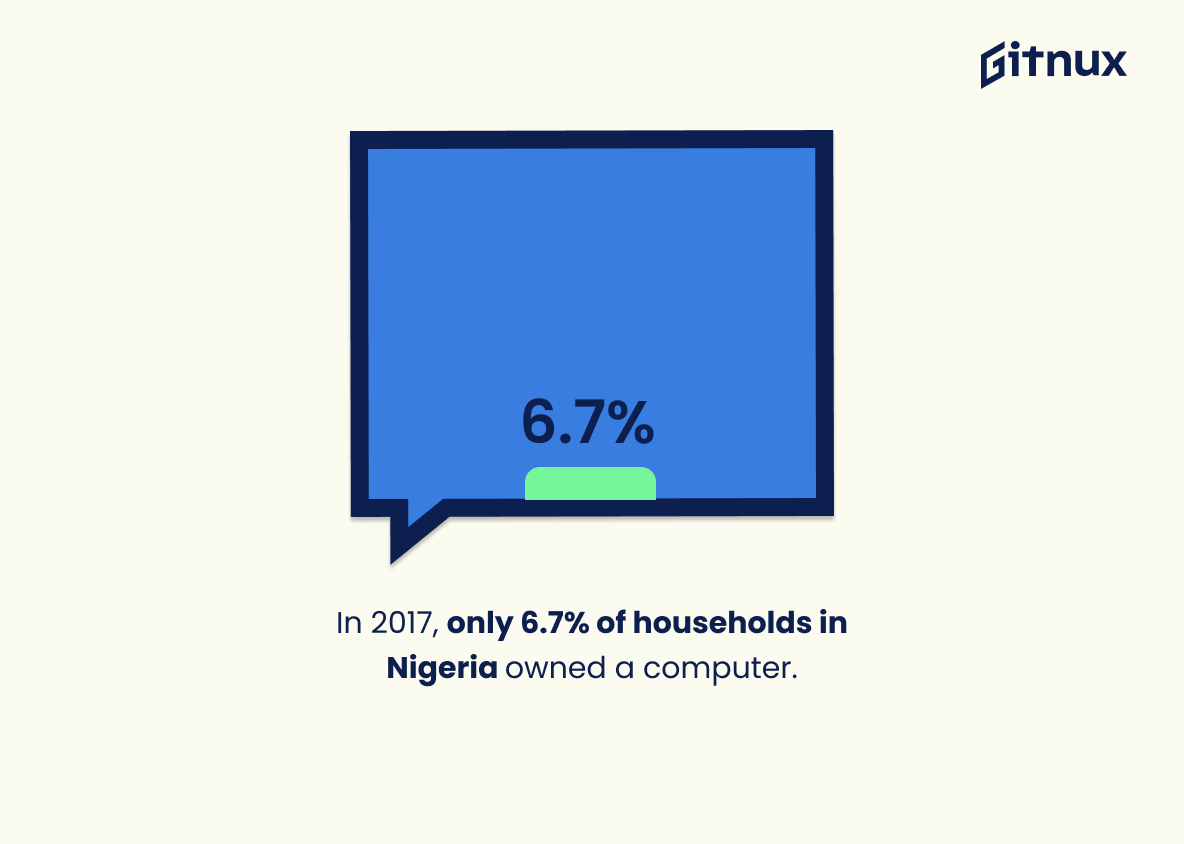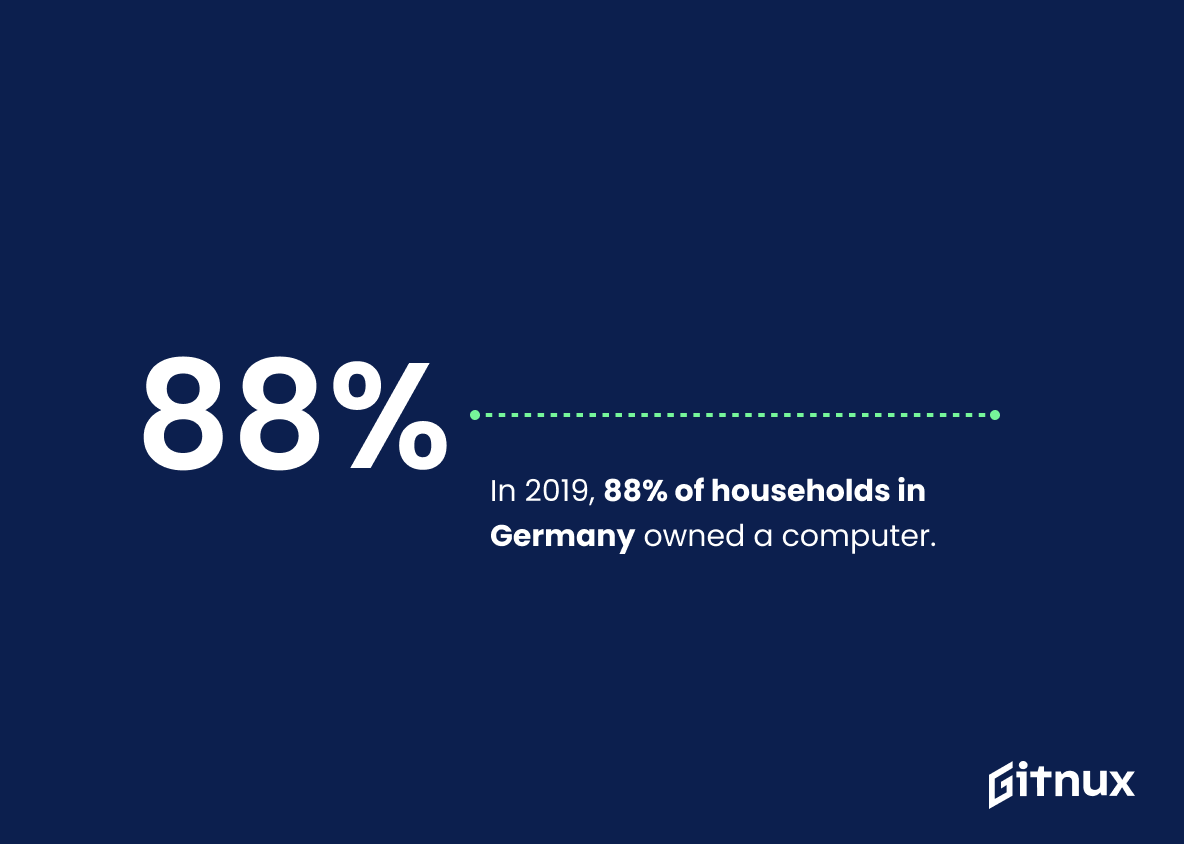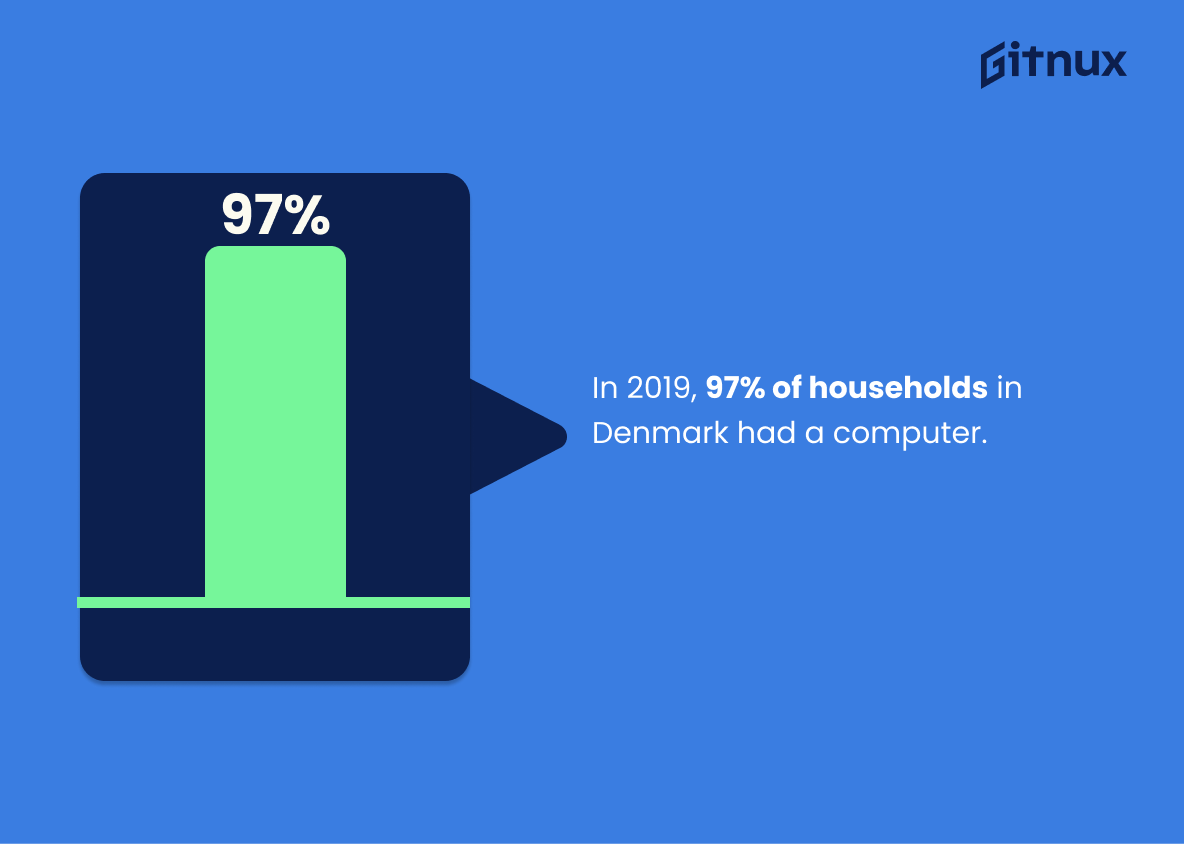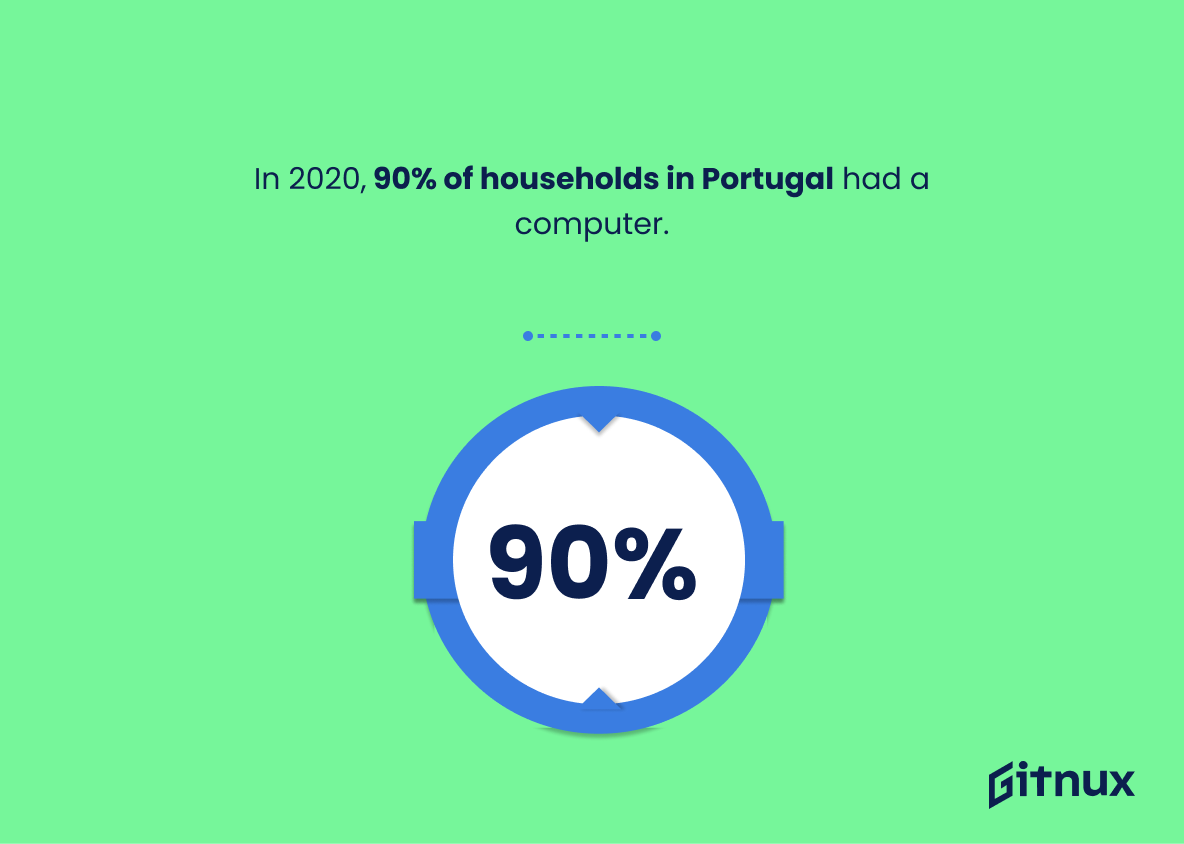The use of computers in households has become increasingly common over the years. According to a variety of sources, 89% of U.S. households have a computer in 2021, 83.9% of European households had one in 2019, 93.1% of Australian homes had one this year and only 27% respondents from India reported having access to a computer at home this year as well. In 2020, 80% K-12 students in the United States were able to access a computer at home while 96%, 94%, 84%, 63.4%, 79.,2 % and 77 % respectively for South Korea , UK , New Zealand , Mexico (urbanized areas), Canada and rural US.
The average household across all countries surveyed owned 5 devices connected to the internet with Nigeria being an outlier with 6%. Other countries such as Germany (88%), Denmark (97%) Portugal(90%), Ukraine(79%) Russia(80%) also showed high levels ownership rates when it comes to personal computers or laptops within their respective homes..
This statistic is a powerful indicator of the prevalence of computers in U.S. households. It speaks to the ubiquity of computers in our lives and how they have become an essential part of our daily lives. This statistic is important to consider when discussing the impact of computers in our homes and how they have changed the way we live.
In 2019, 83.9% of European households had a computer.
This statistic is a powerful indicator of the prevalence of computers in European households. It demonstrates that the majority of households in Europe have access to computers, which is essential for staying connected and informed in the digital age. This statistic is especially relevant for a blog post about Computers In Homes Statistics, as it provides a snapshot of the current state of computer ownership in Europe.
Computers In Homes Statistics Overview
In 2021, 93.1% of Australian households had a home computer.
This statistic is a powerful indicator of the prevalence of computers in Australian households. It shows that the majority of households have access to a computer, which is essential for many activities such as work, education, and entertainment. This statistic is important to consider when discussing the impact of computers in homes and how they are used in everyday life.
In India, only 27% of respondents had a computer in 2021.
This statistic is a stark reminder of the digital divide that exists in India. It highlights the fact that a large portion of the population is still without access to computers, which can be a major obstacle to their ability to participate in the digital economy. This statistic is especially relevant in a blog post about Computers In Homes Statistics, as it serves to illustrate the need for greater access to technology in order to bridge the gap between those who have access to computers and those who do not.
In 2020, only 80% of K-12 students in the U.S. had access to a computer at home.
This statistic is a stark reminder of the digital divide that exists in the United States. It highlights the fact that not all students have the same access to technology, which can have a significant impact on their educational opportunities. It is essential to recognize this disparity and work to bridge the gap so that all students have the same access to the resources they need to succeed.
In 2019, 96% of households in South Korea owned a computer.
This statistic is a testament to the fact that computers have become an integral part of life in South Korea. It shows that the vast majority of households have access to the technology, which can be used for a variety of purposes, from work to entertainment. This statistic is important to consider when discussing the prevalence of computers in homes around the world, as it demonstrates the level of access that South Koreans have to this technology.
In 2021, 63.4% of households in urbanized areas of Mexico had a computer.
This statistic is a telling indication of the prevalence of computers in urbanized areas of Mexico in 2021. It speaks to the level of access to technology that households in these areas have, and the potential for further growth in the future. This information is essential for understanding the current state of computer usage in Mexico, and can be used to inform decisions about how to best support the continued growth of computer usage in the country.
According to 2021 data, 84% of UK households had a computer.
This statistic is a powerful indicator of the prevalence of computers in UK households. It highlights the fact that computers are now a common feature in the majority of homes, and that access to technology is becoming increasingly widespread. This is an important point to consider when discussing the impact of computers on our lives, as it shows that the use of computers is no longer limited to a select few.
In 2019, 79.2% of Canadian households had a desktop or laptop computer.
This statistic is a telling indication of the prevalence of desktop and laptop computers in Canadian households. It speaks to the ubiquity of computers in our homes, and the importance of having access to them in order to stay connected and informed. This statistic is especially relevant in the context of a blog post about Computers In Homes Statistics, as it provides a snapshot of the current state of computer ownership in Canada.
In 2020, 94% of households in Singapore had a computer.
This statistic is a testament to the ubiquity of computers in Singaporean households. It speaks to the fact that computers have become an integral part of everyday life, and that the majority of households in Singapore have access to this technology. This is an important point to consider when discussing Computers In Homes Statistics, as it provides a snapshot of the current state of computer usage in the country.
In 2021, 86% of households in New Zealand had access to a computer.
This statistic is a testament to the fact that computers have become an integral part of life in New Zealand. It shows that the majority of households have access to a computer, which is essential for staying connected, accessing information, and engaging in activities such as online learning and work. This statistic is a reflection of the importance of computers in the lives of New Zealanders and the need for continued access to technology.
In 2019, 94.2% of households in Japan owned a computer.
This statistic is a testament to the ubiquity of computers in Japan. It shows that the vast majority of households in Japan have access to computers, which is a powerful indicator of the country’s technological advancement. This statistic is important to consider when discussing Computers In Homes Statistics, as it provides a snapshot of the current state of technology in Japan.
In 2021, 77% of rural households in the United States owned a computer.
This statistic is a telling indication of the prevalence of computers in rural households in the United States. It speaks to the fact that computers are becoming increasingly accessible to people living in rural areas, which is an important factor in bridging the digital divide. It also highlights the importance of providing access to technology in rural areas, as it can help to improve educational opportunities, access to healthcare, and other essential services.
In 2017, only 6.7% of households in Nigeria owned a computer.
This statistic is a telling indication of the digital divide in Nigeria. It highlights the fact that a vast majority of households in the country lack access to computers, which can be a major obstacle to their ability to access the internet and the wealth of information and opportunities it provides. This statistic is an important reminder of the need to bridge the digital divide in Nigeria and ensure that all households have access to computers.
In 2019, 88% of households in Germany owned a computer.
This statistic is a powerful indicator of the prevalence of computers in German households. It demonstrates that computers are an integral part of everyday life in Germany, and that the majority of households have access to the technology. This is an important point to consider when discussing the impact of computers on society, as it shows that computers are widely available and used in Germany.
In 2019, 97% of households in Denmark had a computer.
This statistic is a powerful indicator of the prevalence of computers in Danish households. It demonstrates that computers are an integral part of everyday life in Denmark, and that the vast majority of households have access to this technology. This is an important point to consider when discussing the impact of computers on society, as it shows that computers are widely available and used in Denmark.
In 2020, 90% of households in Portugal had a computer.
This statistic is a testament to the fact that computers have become an integral part of life in Portugal. It shows that the majority of households have access to the technology, which can be used for a variety of purposes, from work to entertainment. This statistic is a reflection of the importance of computers in the lives of Portuguese people and the impact they have had on the country.
In 2017, 79.2% of households in Ukraine owned a personal computer.
This statistic is a telling indication of the prevalence of computers in Ukrainian households. It speaks to the fact that computers are becoming increasingly commonplace in homes across the country, and that the majority of households now have access to this technology. This is an important point to consider when discussing the impact of computers on the lives of Ukrainians.
In 2019, 80.7% of households in Russia owned a computer.
This statistic is a telling indication of the prevalence of computers in Russian households. It speaks to the level of access to technology that the average Russian family has, and the potential for further growth in the computer industry in the country. It is an important piece of information to consider when discussing the impact of computers in homes and the potential for further development in the area.
Conclusion
The statistics show that computer ownership is widespread across the world, with most countries having at least 80% of households owning a computer. The highest rates are found in South Korea (96%), Denmark (97%) and Japan (94.2%). On the other hand, some countries have lower levels of access to computers such as India (27%), Nigeria (6.7%) and Ukraine (79.2%).
In addition, there is also variation between urbanized areas and rural areas within certain countries; for example, 93.1% of Australian households had a home computer compared to 77% in rural US households in 2021 respectively. Overall these figures demonstrate how important it is for people around the world to have access to technology so they can benefit from its advantages both socially and economically
References
0. – https://www.rosstat.gov.ru
1. – https://www.pordata.pt
2. – https://www.50.statcan.gc.ca
3. – https://www.inegi.org.mx
4. – https://www.stats.govt.nz
5. – https://www.roymorgan.com
6. – https://www.ukrstat.gov.ua
7. – https://www.nces.ed.gov
8. – https://www.assemblyresearch.co.uk
9. – https://www.pewresearch.org
10. – https://www.data.gov.sg
11. – https://www.stat.go.jp
12. – https://www.dailywireless.org
13. – https://www.destatis.de
14. – https://www.kosis.kr
15. – https://www.dst.dk
16. – https://www.statista.com
ZipDo, cited June 2023: Computers In Homes Statistics
